One in six Australians are affected by hearing loss, and this figure is expected to rise to more than one in four by 2050. For people over the age of 70, the prevalence is currently as high as three in every four.
Hearing is one of your primary senses. Every moment of every day, your hearing connects you to the people and environment around you. The ability to hear is fundamental to your ability to communicate verbally – to listen and speak to others – which enhances your capacity to participate in family affairs, work, education, social activities, and the community at large.
The main consequence of hearing loss is a reduced capacity to communicate, but the downstream impact this has on every aspect of a person’s life, from their personal relationships and productivity levels, to their physical and mental well-being, can be devastating. While interventions such as hearing aids and cochlear implants can enhance a person’s ability to communicate, the majority of people with hearing loss do not have such devices.
The Fundamentals of Hearing Loss
The ability to hear requires a complex chain of events to occur, starting with vibrations in the air being funnelled into your ear canals, and ending with neural electrical impulses being processed within the auditory cortex of the brain as ‘sound’ (almost instantaneously!). Hearing loss can result from interruption anywhere along this pathway. Individual experiences of hearing loss vary depending on the location of the damaged part of the auditory pathway, the severity of the loss, the affected frequency (pitch) range, and when the hearing loss occurred (this last point is important – read on).
A hearing assessment performed by an audiologist will help to differentially diagnose an individual’s hearing loss. With this information, a management plan can be put in place, which may involve recommendations to seek medical treatment, advice on listening and communication strategies, and/or remediation of the negative effects of hearing loss using hearing devices.
But remember, hearing is ultimately a brain activity. For neural pathways in the brain to stay strong, they must be regularly stimulated. Leaving hearing loss untreated deprives the brain of sound stimulation. The longer you wait to seek treatment, the more trouble you may have understanding and processing that sound in a meaningful way. This can result in poorer outcomes with fitting hearing devices, including hearing aids and hearing implants.
If you have a hearing problem, it is important to seek help sooner rather than later. Talk to your doctor, or contact us about arranging a hearing assessment.
The Audiogram

An audiogram, like the one pictured, is a standardised graphical representation of an individual’s hearing loss. When you have a hearing assessment, the softest sounds that you can hear in each ear (your hearing thresholds) are measured at intervals across the frequency (pitch) range of human speech.
If all of your hearing thresholds are better (less) than 20dB, you have clinically ‘normal’ hearing. If some or all of your thresholds are poorer (greater) than 20dB, you have hearing loss.
An audiogram is one of the tools an Audiologist uses to determine the type and severity of an individual’s hearing loss. It is also used as a foundation to fit hearing aids with an appropriate amount of amplification at each frequency to optimise audibility for the wearer.
To learn more about the testing process, see Hearing Assessment.
Types of Hearing Loss
Conductive Hearing Loss
Conductive hearing loss is caused by a blockage or damage to the outer or middle ear which dampens sound reaching the cochlea and hearing nerve. Conductive hearing loss is often temporary but can also cause long term hearing impairment.
Common causes are excessive wax, sinus blockage, middle ear infections (including glue ear), and eardrum perforations. A person may experience these conditions several times in their life, without significant or long-term impact on their hearing. These conditions usually resolve on their own or with minor medical intervention.
More complex causes, such as otosclerosis, ossicular discontinuity, congenital malformation of the outer or middle ear, or chronic middle ear disease, require specialist diagnosis and management. These conditions may be managed medically, surgically, and/or remediated with the use of hearing devices.
Sensorineural Hearing Loss
Sensorineural hearing loss is usually permanent. It can result from problems with the cochlea or auditory nerve, which degrades the sound signals being sent to the brain. This form of hearing loss may be caused by genetics, ageing, noise damage, head trauma, or disease. Sensorineural hearing loss may occur gradually over many years, or suddenly over a period of seconds or a few days.
Sudden sensorineural hearing loss is considered a medical emergency. If you or someone you know experiences sudden hearing loss in one or both ears (often accompanied by tinnitus and/or dizziness), visit a doctor immediately.
Hearing problems caused by sensorineural hearing loss are usually addressed with the use of hearing devices, such as hearing aids or cochlear implants.
Mixed Hearing Loss
Mixed hearing loss involves a combination of problems in the middle and inner ear, resulting in conductive and sensorineural hearing loss occurring in the same ear.
Hearing Loss Severity
When describing a person’s audiogram, the overall hearing level (hearing threshold average) is classified as normal, or a mild, moderate, severe, or profound hearing loss. The ‘shape’ or configuration of the audiogram is also described using terms such as ‘high-frequency’, ‘flat’, ‘notched’, or ‘steeply sloping’, to indicate which frequency (pitch) range is affected. These terms are used in favour of ‘percentage hearing loss’ because they better describe the types of sound that the person cannot hear, and the degree of impact that the hearing loss would have on a person’s everyday life.
Although everyone experiences hearing loss differently, the below is a guideline for the types of hearing problems one may have with increasing severity of hearing loss:
0-20 decibels (dB) | No hearing loss
No impact in a good listening environment.
21-45 decibels (dB) | Mild hearing loss
Understanding some speakers can be difficult, especially in a noisy environment, but you would manage in quiet situations with clear voices. People may sound like they are mumbling, and sounds may be lacking ‘clarity’. Hearing aids will assist most hearing problems in this range.
46-65 decibels (dB) | Moderate hearing loss
Hearing and understanding is difficult in ideal conditions, and more so in noisy places. The TV and radio would be turned up to help with speech understanding. Hearing aids will benefit most hearing difficulties in this range, particularly if speech discrimination is good and background noise is reduced as much as possible.
66-90 decibels (dB) | Severe hearing loss
Normal speech is mostly inaudible. Communication relies heavily on visual information such as lip reading, sign language, or text/captions. Hearing aids will improve audibility although speech clarity may remain affected and visual cues are essential. Assistive listening devices working in conjunction with hearing aids would provide further benefit.
91+ decibels (dB) | Profound hearing loss
Loud speech is inaudible and residual hearing is likely distorted. There is great inconsistency in the benefit derived from hearing aids. Some people can understand clear speech face-to-face in places with good auditory conditions, while others find it impossible. A cochlear implant may be more appropriate.
It is important to remember that everyone’s experience with hearing loss is different. If you are having hearing difficulty, it’s essential that you receive a comprehensive hearing assessment and tailored management plan that focuses on your specific hearing needs and goals.
Are you concerned about your hearing?
Learn how to recognise the signs of hearing loss or try our Online Hearing Screener.
Alternatively, contact us to arrange a hearing assessment.



